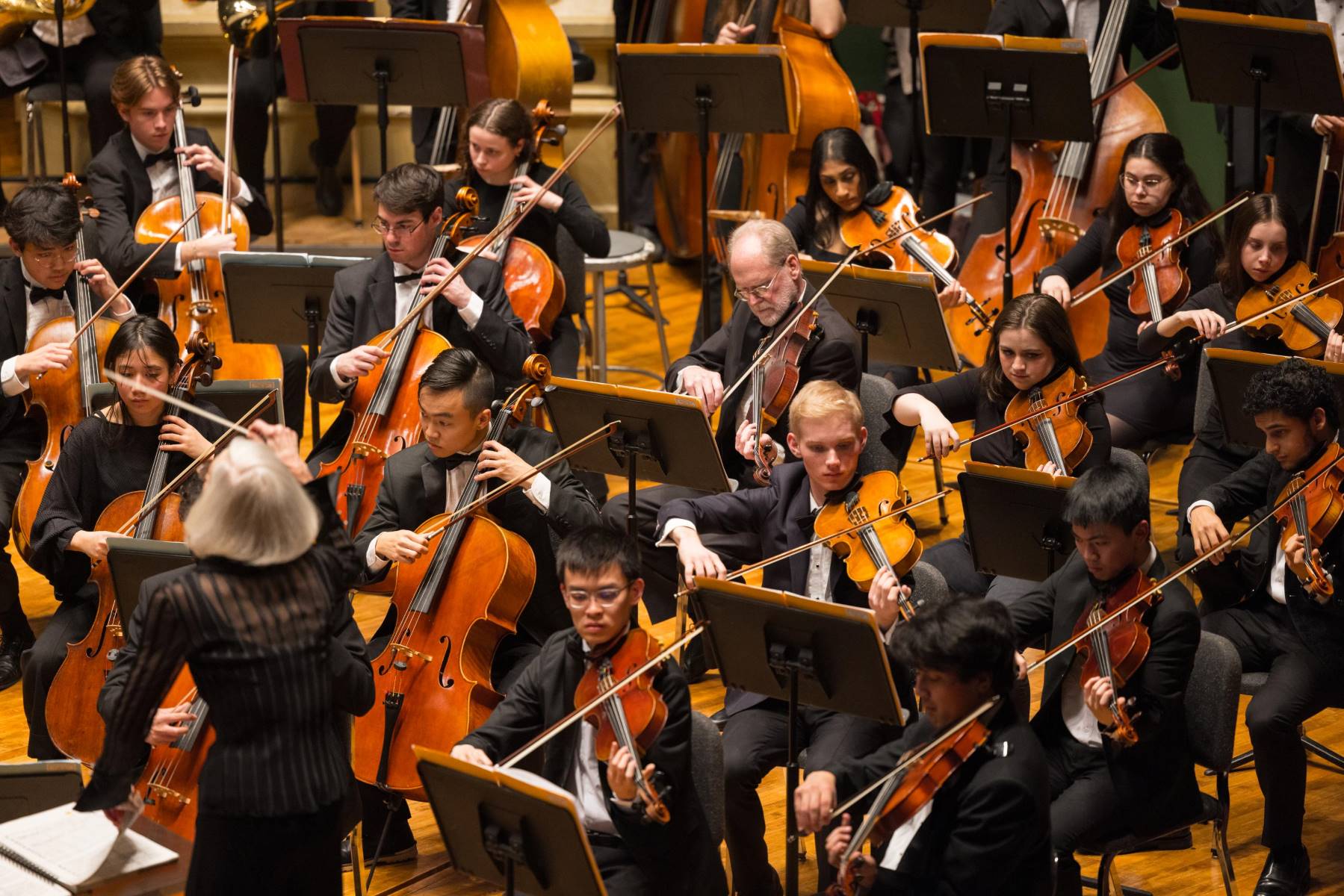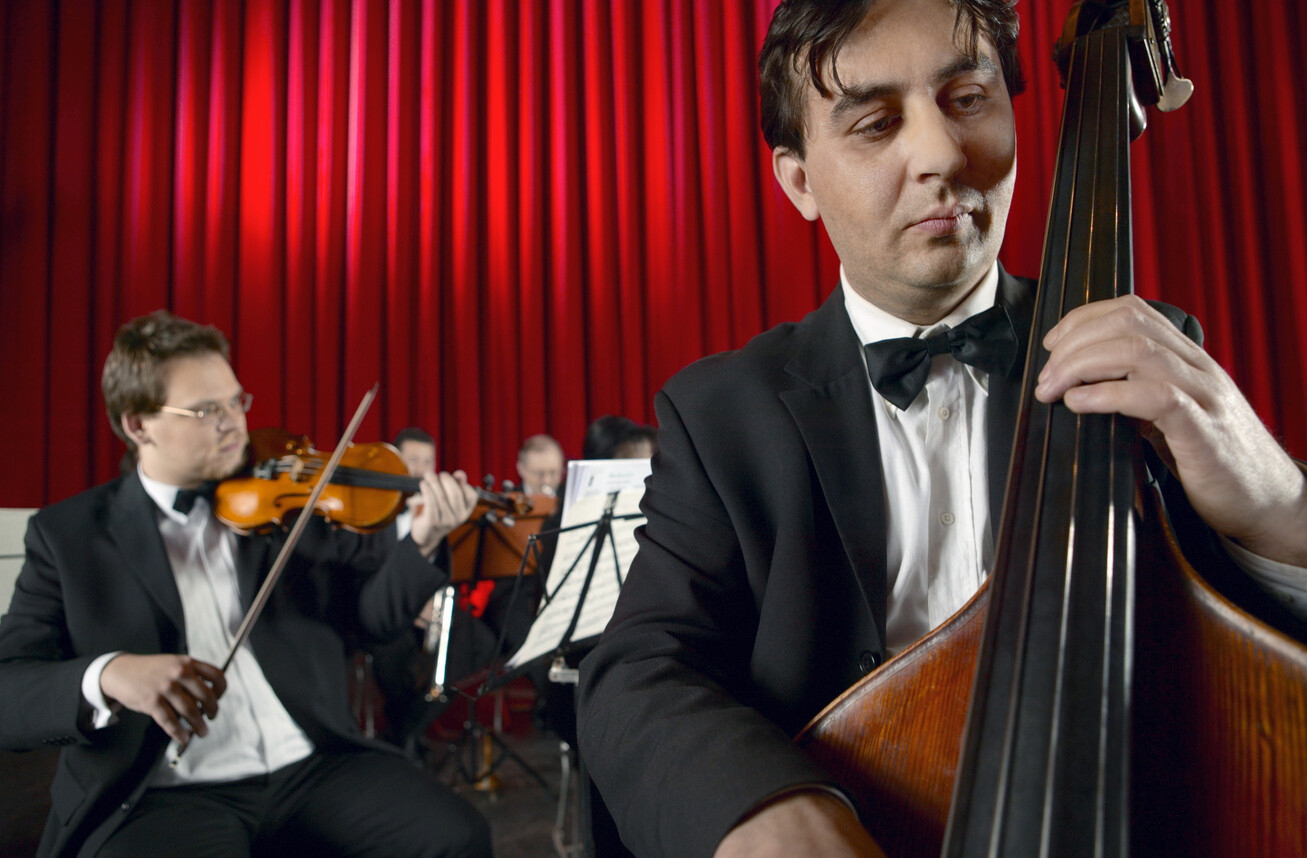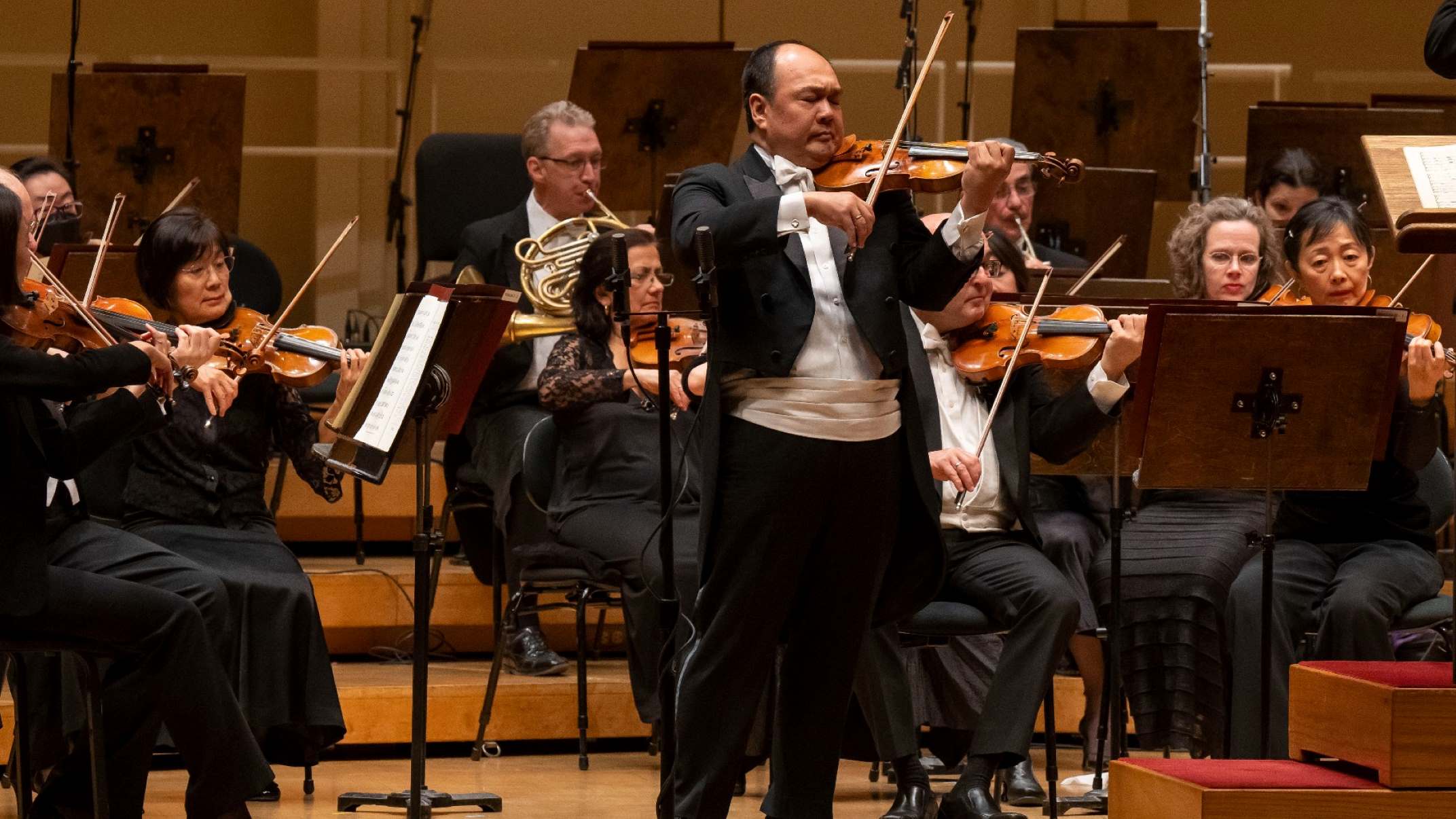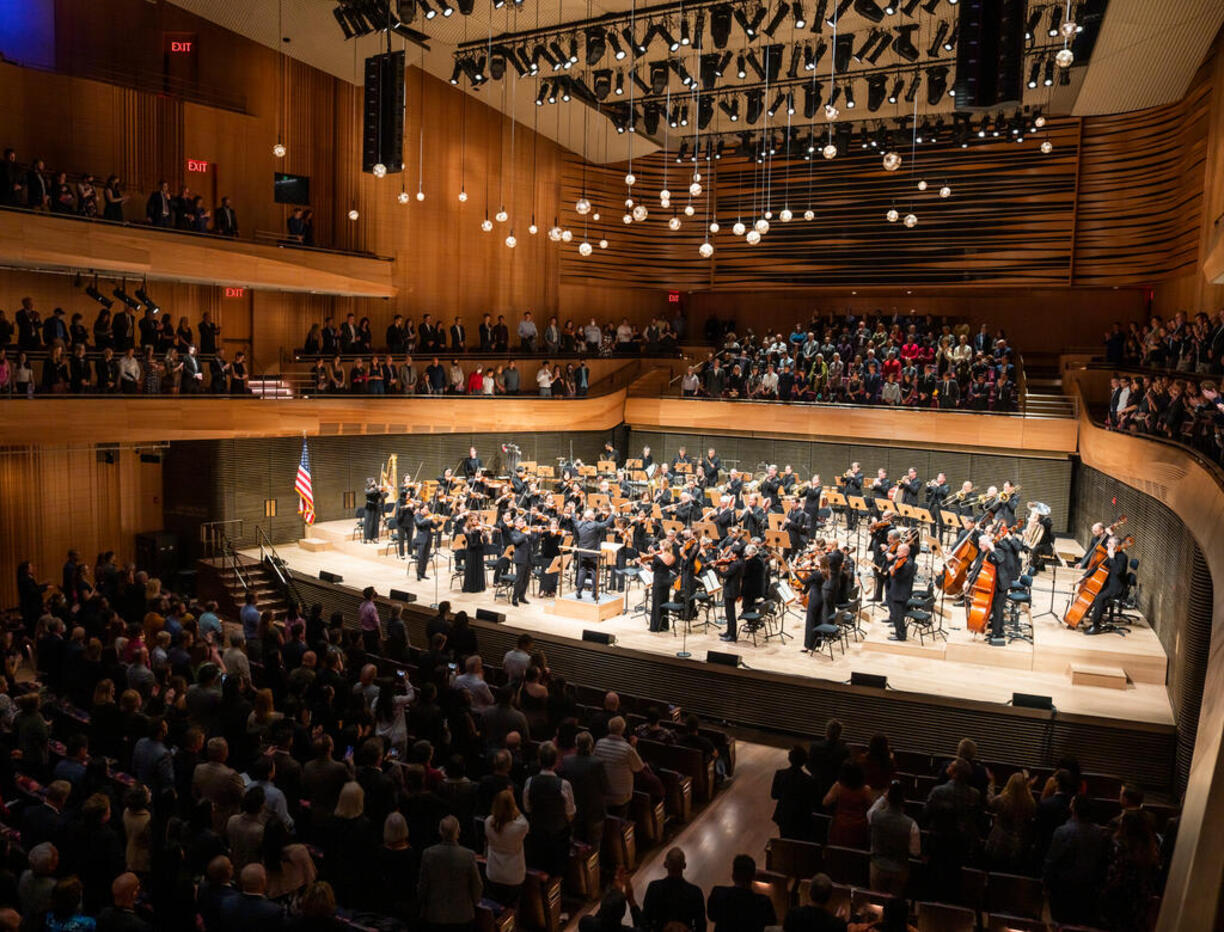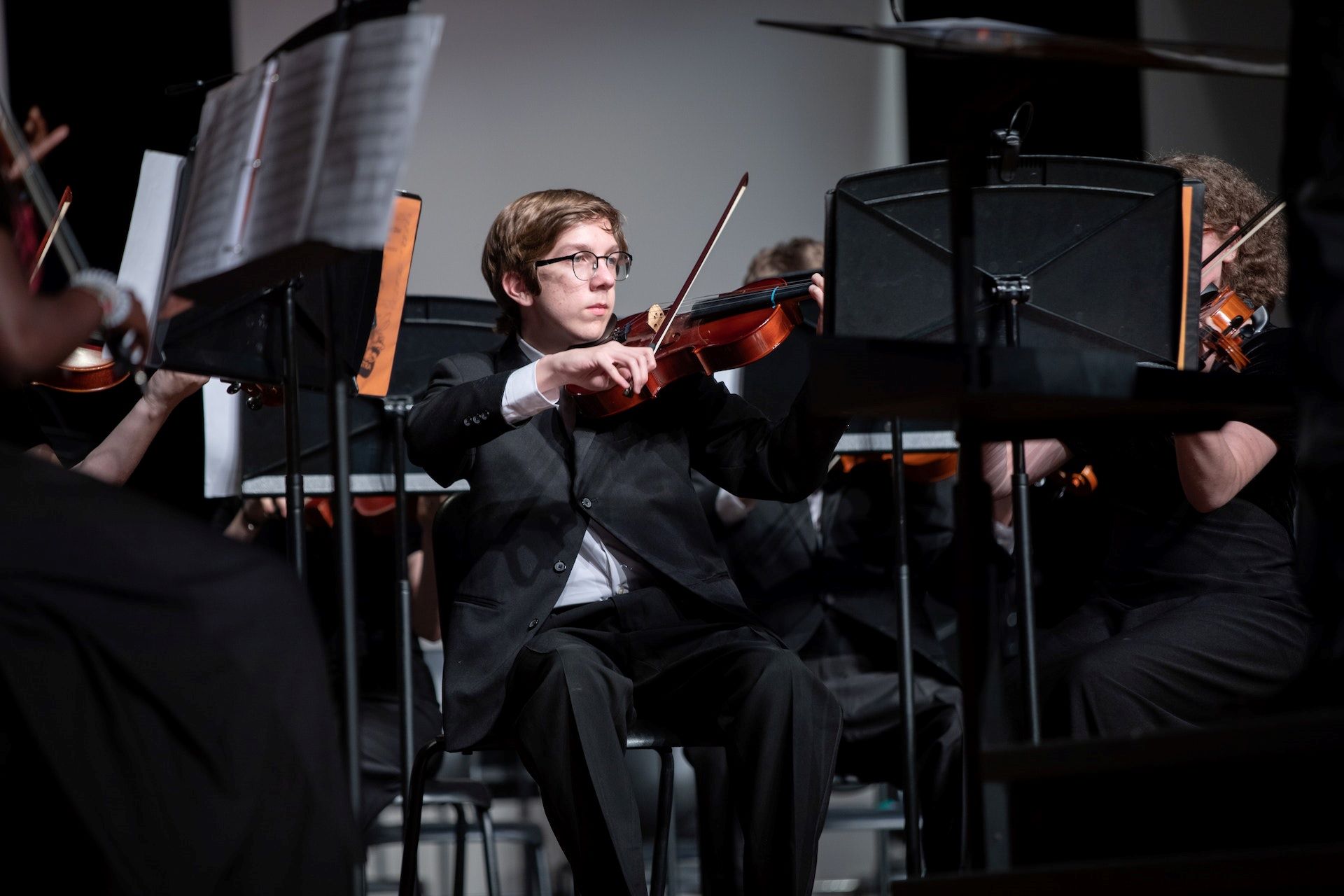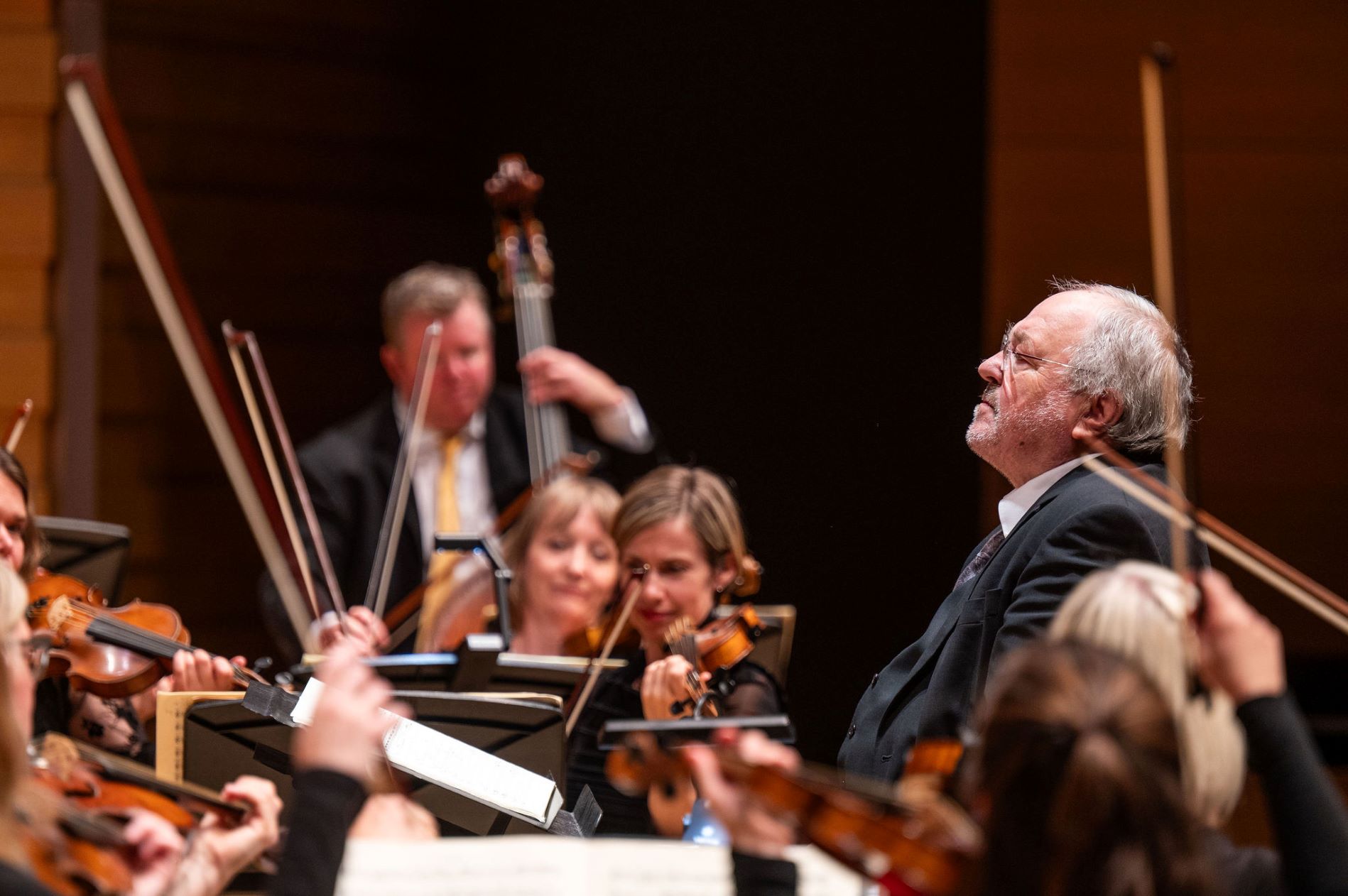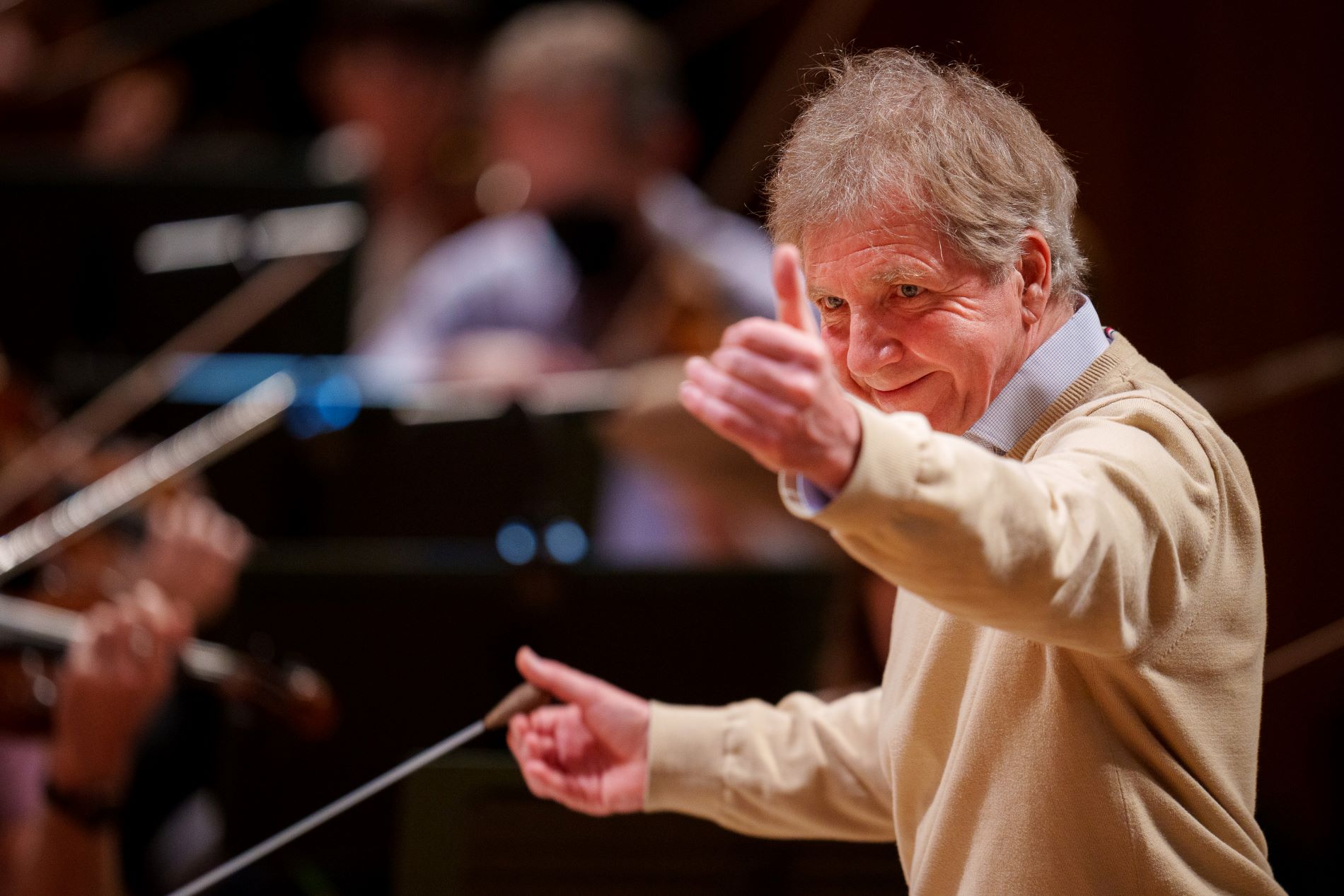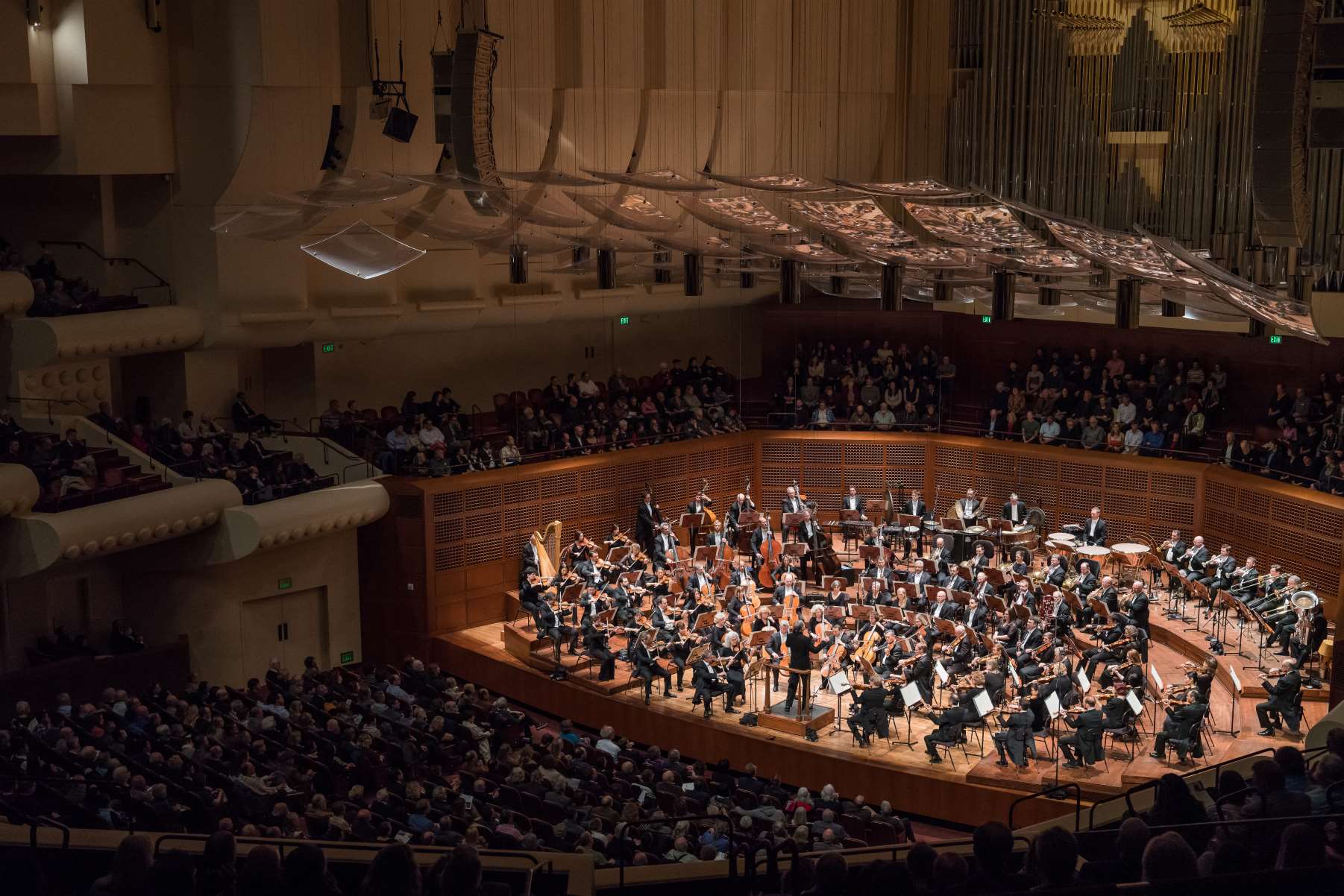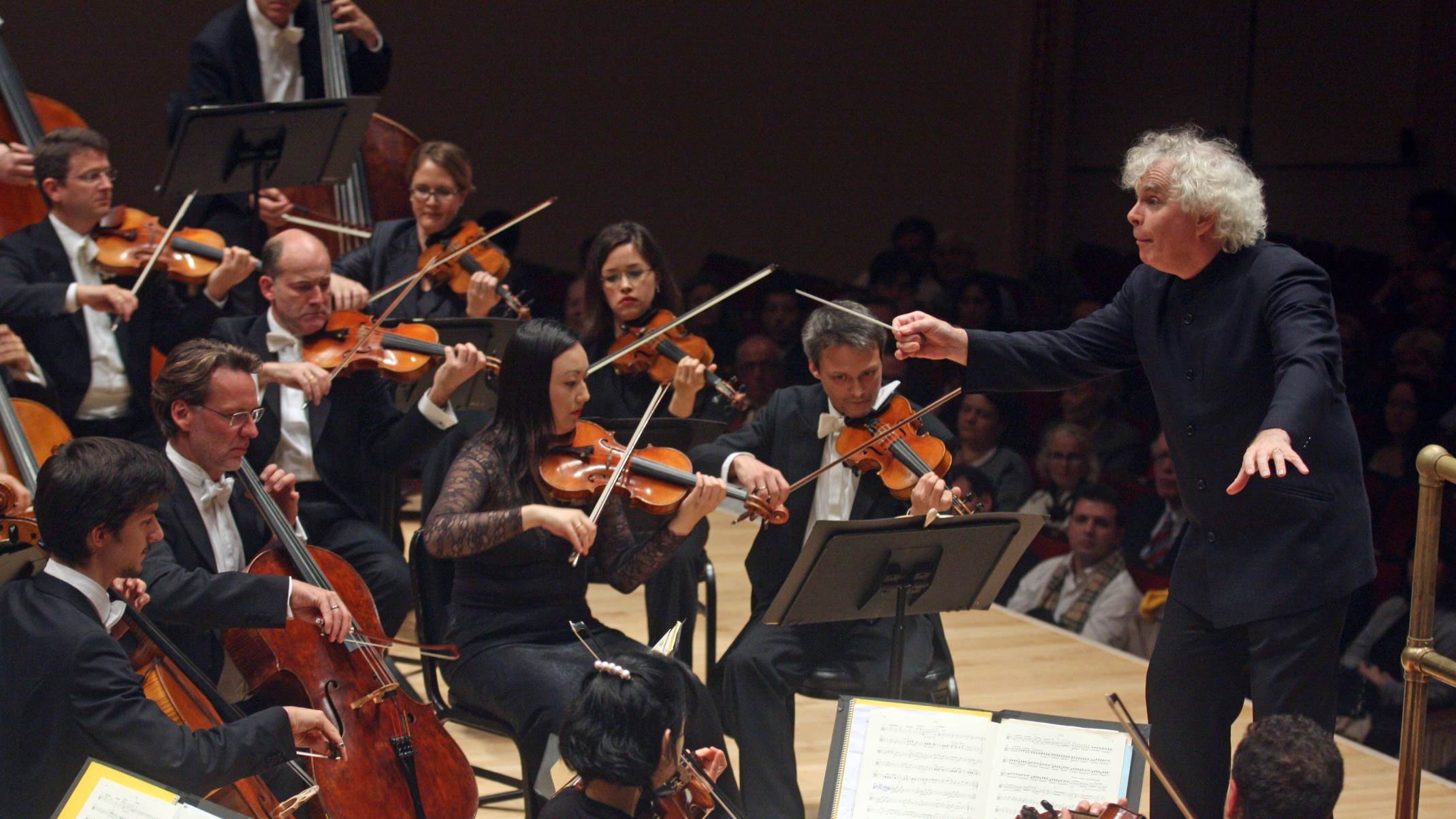

Symphony
What Is A Choral Symphony
Modified: February 24, 2024
Discover the beauty of a choral symphony and its intricate harmony. Experience the power and emotion of symphonic music with captivating vocals.
(Many of the links in this article redirect to a specific reviewed product. Your purchase of these products through affiliate links helps to generate commission for AudioLover.com, at no extra cost. Learn more)
Table of Contents
Introduction
A choral symphony is a musical composition that combines both choral and orchestral elements. It is a genre that has captivated audiences for centuries with its grandeur and depth. Choral symphonies serve as a platform for composers to explore the fusion of vocal and instrumental forces, creating a rich and dynamic sonic experience.
With the power and versatility of a full choir, combined with the vast tonal palette of an orchestra, choral symphonies have the ability to evoke a wide range of emotions, from the exultant and majestic to the intimate and introspective. The seamless integration of voices and instruments provides a unique and multi-dimensional texture to the music.
Choral symphonies have a rich history, dating back to the Renaissance period when vocal music was an integral part of religious and secular ceremonies. The genre reached its zenith during the Romantic era, with composers like Beethoven, Mahler, and Brahms pushing the boundaries of orchestral and choral composition.
Throughout the years, choral symphonies have remained popular, captivating audiences with their grand scale and emotional impact. The combination of voices and instruments allows for a broad range of expressive possibilities, enabling composers to explore themes of love, nature, spirituality, and the human condition.
In this article, we will delve into the world of choral symphonies, exploring their definition, historical background, the role of the choir, and notable examples of this captivating genre. Join us as we embark on a journey through the harmonious blend of voices and instruments that define the choral symphony.
Definition of Choral Symphony
A choral symphony can be defined as a large-scale musical composition that combines the elements of a symphony with the addition of a choir. It is a genre that brings together the power of an orchestra and the resonance of a vocal ensemble, creating a grand and encompassing musical experience.
The choral symphony typically follows the traditional structure of a symphony, consisting of multiple movements that vary in tempo, mood, and musical ideas. These movements can range from energetic and lively to serene and contemplative, showcasing the versatility of both the choral and orchestral forces.
What distinguishes the choral symphony from other symphonic works is the inclusion of a choir. The choir adds a vocal component to the composition, allowing for the performance of lyrics or vocal lines alongside the instrumental melodies. This integration of voices and instruments creates a rich and textured sound, resulting in a heightened emotional impact.
The choral aspect of the symphony can take various forms. It can involve the entire choir singing in unison or in harmony, or it can include soloists who perform alongside the choir and the orchestra. Composers often employ different vocal techniques, such as polyphony (multiple independent vocal lines) or homophony (chordal harmonies), to further enhance the expressive qualities of the choral symphony.
Choral symphonies also vary in terms of lyrical content. Some may feature religious texts, drawing inspiration from sacred works or liturgical traditions, while others may incorporate secular poetry or original lyrics. The choice of text adds another layer of meaning and significance to the music, allowing for deeper exploration of themes and narratives.
In summary, a choral symphony is a genre that seamlessly combines the symphonic and choral elements. It encompasses a wide range of musical compositions that feature both a full orchestra and a choir, resulting in a powerful and immersive sonic experience.
Historical Background
The history of the choral symphony can be traced back to the Renaissance period, when vocal music played a prominent role in both religious and secular settings. During this time, choral music was primarily performed a cappella, without instrumental accompaniment. However, composers began to experiment with combining voices and instruments, leading to the emergence of the choral symphony.
One of the early pioneers of the choral symphony was Ludwig van Beethoven, whose Ninth Symphony, also known as the “Choral Symphony,” paved the way for future composers. Premiered in 1824, Beethoven’s Ninth Symphony incorporated a full choir in the final movement, setting the text of Friedrich Schiller’s “Ode to Joy.” This groundbreaking work elevated the choral symphony to new heights and left a lasting impact on the genre.
Following Beethoven’s lead, other composers began to explore the potential of combining choral and orchestral elements in their compositions. During the Romantic era, the choral symphony flourished, with composers like Gustav Mahler, Johannes Brahms, and Hector Berlioz further expanding the boundaries of the genre.
In the late 19th and early 20th centuries, choral symphonies continued to evolve, reflecting the shifting musical landscape. Composers such as Ralph Vaughan Williams, Sergei Rachmaninoff, and Benjamin Britten incorporated folk melodies, religious themes, and social commentaries into their choral symphonies, adding a distinct cultural and political context to the genre.
Today, the choral symphony remains a vibrant and dynamic genre, with contemporary composers embracing its rich tradition while infusing their own unique stylistic elements. From the ethereal works of Arvo Pärt to the experimental compositions of Eric Whitacre, the choral symphony continues to captivate audiences and push the boundaries of musical expression.
While the choral symphony has evolved over time, it remains a testament to the enduring power of the human voice and its ability to blend seamlessly with the majestic sounds of the orchestra. Through its historical journey, the choral symphony has left an indelible mark on the world of music, bridging the gap between vocal and instrumental artistry and providing audiences with a transcendent musical experience.
Combination of Choral and Orchestral Elements
At the heart of a choral symphony lies the seamless fusion of choral and orchestral elements. The combination of these two powerful forces creates a unique and dynamic sonic experience that sets the genre apart from other forms of symphonic music.
The orchestra, with its diverse range of instruments and expressive capabilities, forms the foundation of the choral symphony. It provides the harmonic, melodic, and rhythmic framework that supports and interacts with the choir. The orchestra’s ability to evoke a wide range of emotions through its rich timbre and varied textures adds depth and dimension to the overall musical composition.
The choir, on the other hand, brings the human voice into the equation, adding a layer of expressiveness and emotional depth. The combined voices of the choir have the power to convey a wide range of emotions, from exultation and triumph to tenderness and introspection. In choral symphonies, the choir often performs vocal lines that are independent of or in conjunction with the orchestral melodies, creating a harmonious blend of vocal and instrumental textures.
Composers of choral symphonies make use of various techniques to exploit the potential of blending choral and orchestral elements. They create moments of contrast and unity, alternating between sections where the orchestra takes center stage and others where the choir shines. The interplay between the two elements serves to heighten the emotional impact of the music and create a sense of grandeur.
One of the fundamental challenges faced by composers of choral symphonies is achieving a delicate balance between the choir and the orchestra. The blending of voices and instruments requires careful consideration of dynamics, phrasing, and vocal and instrumental ranges. Composers often utilize orchestration techniques such as doubling the choir with certain instrumental sections to enhance the overall sound and achieve a cohesive blend.
Through the combination of choral and orchestral elements, choral symphonies have the ability to evoke a range of emotions and paint vivid sonic landscapes. Whether it is the thunderous power of a full choir singing in unison, the delicate interplay between a soloist and the orchestra, or the soaring melodies of the vocal lines entwined with orchestral textures, the combination of these two musical elements creates a rich and immersive musical experience.
The marriage of choir and orchestra in the choral symphony genre represents a harmonious collaboration between two distinct yet complementary musical forces. It is through their integration that composers are able to convey profound and universal themes, transcending the boundaries of language and immersing audiences in the beauty and complexity of the human experience.
Role of the Choir
In the realm of choral symphonies, the choir plays a pivotal role, adding a distinct vocal element that elevates the musical composition to another level. The choir brings a richness and depth to the overall sound, enhancing the emotional impact and providing a powerful contrast to the instrumental elements.
One of the primary roles of the choir in a choral symphony is to convey the lyrical content of the composition. Whether singing sacred texts, secular poetry, or original lyrics, the choir serves as the vessel for delivering messages, stories, and emotions. The human voice has a unique ability to communicate and connect with audiences on a deep and emotional level, and the choir’s vocal performance allows for a direct and powerful expression of the music’s themes and narratives.
In addition to conveying the lyrics, the choir often adds a sense of grandeur and scale to the overall composition. With the combined voices of multiple singers, the choir possesses the ability to create a massive and awe-inspiring sound. This can be particularly impactful in moments of climactic build-up or in passages where the composer aims to evoke a sense of majesty and power.
The versatility of the choir is also showcased in its ability to produce various vocal textures and harmonies. Depending on the composer’s intent, the choir may sing in unison, harmonize in different voice parts, or create complex contrapuntal lines. The interplay between these vocal textures and the accompanying orchestral melodies adds layers of complexity and depth to the overall musical composition.
In many choral symphonies, the choir often shares the spotlight with soloists, who can be members of the choir or dedicated solo vocalists. Soloists provide individual voices that stand out from the collective sound of the full choir, allowing for moments of intimacy and personal expression within the larger choral framework. These solo passages provide a contrast to the grandeur of the full ensemble and allow for the exploration of more nuanced emotions and characterizations.
The role of the choir extends beyond the performance itself. Many choruses that specialize in choral symphonies serve as ambassadors of the genre, keeping the tradition alive through their performances, recordings, and collaborations with orchestras and composers. They contribute to the preservation and continued exploration of choral symphonies as a vibrant and evolving musical form.
Ultimately, the choir brings a distinct voice and a human element to the choral symphony, enriching the musical experience with its lyrical delivery, grandeur, harmonies, individual voices, and contributions to the overall artistic interpretation. The choir’s role in the choral symphony is essential in creating a unique and powerful fusion of vocal and instrumental elements, captivating listeners and evoking profound emotions.
Notable Examples of Choral Symphonies
The genre of choral symphony has seen the creation of many remarkable and influential compositions throughout history. These notable examples showcase the immense power and beauty that can be achieved through the combination of choral and orchestral elements.
Ludwig van Beethoven’s Ninth Symphony, also known as the “Choral Symphony,” stands as one of the most iconic and influential choral symphonies in history. Premiered in 1824, this monumental work features a full choir in its final movement, setting Friedrich Schiller’s “Ode to Joy” to music. Beethoven’s Ninth Symphony is renowned for its grandeur, its profound expression of joy, and its lasting impact on the choral symphony genre.
Gustav Mahler’s Symphony No. 2, known as the “Resurrection Symphony,” is another profound example of a choral symphony. Composed between 1888 and 1894, this symphony incorporates a large choir in its grand finale. The choral sections in Mahler’s Symphony No. 2 convey themes of death, resurrection, and the transcendent power of the human spirit.
Johannes Brahms’s A German Requiem is a significant choral symphony composed in the mid-19th century. It is a large-scale work for choir, soloists, and orchestra that set a selection of biblical texts, chosen by Brahms himself, in the German language. With its complex vocal and orchestral writing, Brahms’s A German Requiem is a masterpiece that explores themes of loss, consolation, and redemption.
Sergei Rachmaninoff’s The Bells, composed in 1913, is a choral symphony based on the poem by Edgar Allan Poe. This hauntingly beautiful work showcases Rachmaninoff’s mastery of choral and orchestral techniques, capturing the emotions and imagery evoked by the sound of different types of bells. The Bells is a testament to Rachmaninoff’s ability to create a compelling narrative through the melding of voices and instruments.
Benjamin Britten’s War Requiem, premiered in 1962, is a powerful and poignant choral symphony that reflects on the devastating impact of war. Britten combines the traditional Latin text of the Requiem Mass with the poetry of World War I soldier Wilfred Owen. The interplay between the large symphony orchestra, chamber orchestra, choir, and soloists creates a dramatic and emotionally charged work that delivers a powerful anti-war message.
These examples, among others, highlight the diversity of styles, themes, and approaches within the choral symphony genre. Each composition showcases the unique collaborative power of voices and instruments, leaving an indelible mark on the world of classical music.
The choral symphony genre continues to evolve, with contemporary composers exploring new horizons and pushing the boundaries of vocal and instrumental expression. Through these notable examples, we can appreciate the lasting impact and artistic depth that choral symphonies have brought to the world of music.
Conclusion
The choral symphony is a genre that marries the expressive qualities of the human voice with the vast tonal palette of an orchestra. Through this fusion, composers have created powerful and moving musical compositions that have captivated audiences for centuries.
With its roots in the Renaissance and its pinnacle in the Romantic era, the choral symphony has a rich historical background. Composers like Beethoven, Mahler, Brahms, and others have pushed the boundaries of the genre, exploring themes of joy, death, spirituality, and the human experience.
The choir plays a central role in the choral symphony, delivering lyrical content with its unique expressiveness and adding grandeur to the overall sound. The combination of voices and instruments creates a rich tapestry of harmonies, melodies, and textures, evoking a wide range of emotions and leaving a lasting impact on listeners.
Notable examples of choral symphonies, such as Beethoven’s Ninth Symphony, Mahler’s Symphony No. 2, and Brahms’s A German Requiem, showcase the power and beauty that can be achieved when voices and instruments come together. These compositions have become timeless masterpieces that continue to inspire and shape the genre.
In conclusion, the choral symphony stands as a testament to the power of music to communicate and transcend language, evoking profound emotions and taking listeners on a transformative journey. As the genre continues to evolve and composers explore new horizons, the choral symphony remains a vibrant and captivating form of musical expression.
Through its blend of choral and orchestral elements, the choral symphony offers an immersive and enriching experience, weaving together the voices of a choir with the vast sonic possibilities of an orchestra. Its impact on the world of music is undeniable, leaving an enduring legacy that resonates with audiences across generations. Whether experiencing the sheer power and majesty of a full choir or the tender intimacy of a soloist’s voice, the choral symphony continues to captivate and inspire listeners, transporting them to a world of beauty, emotion, and transcendence.

